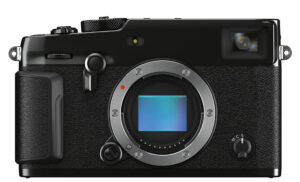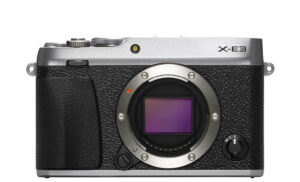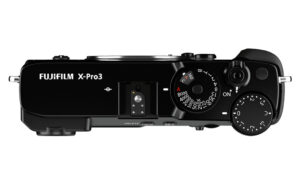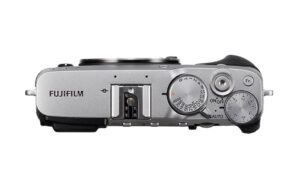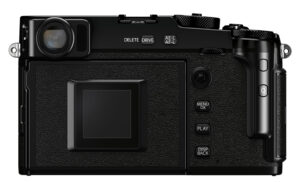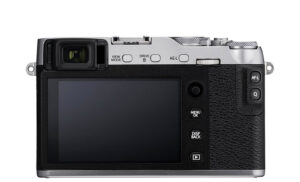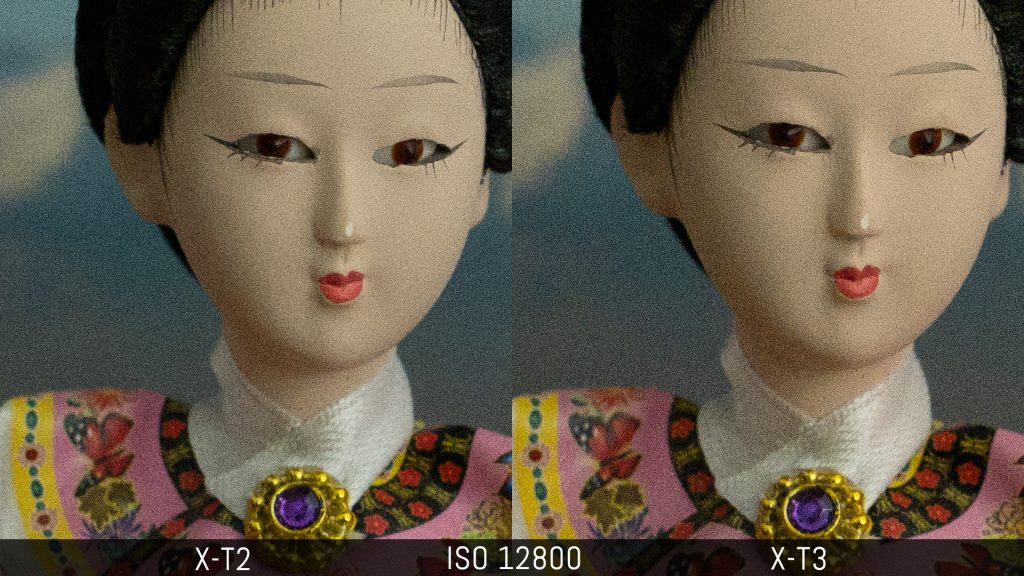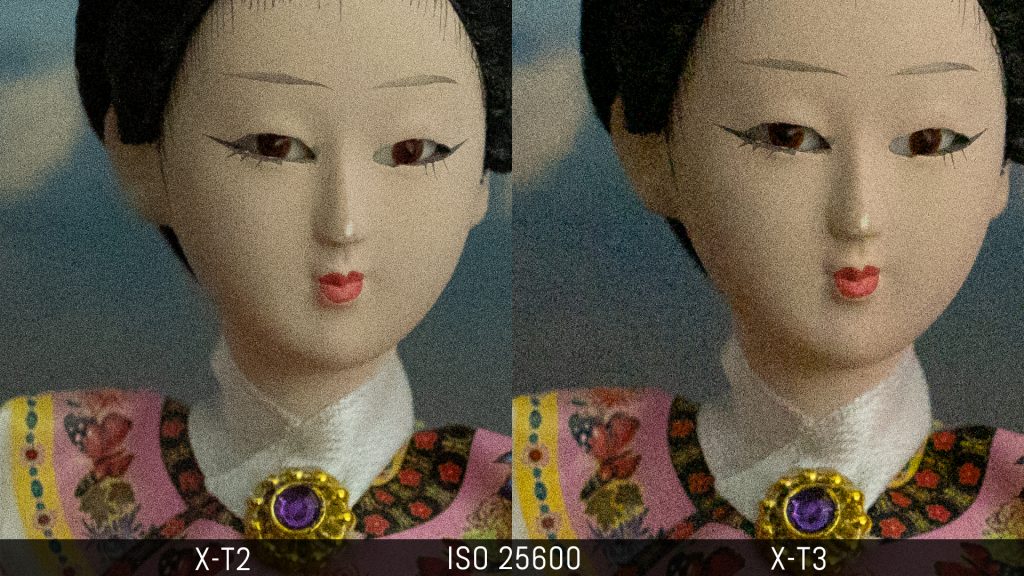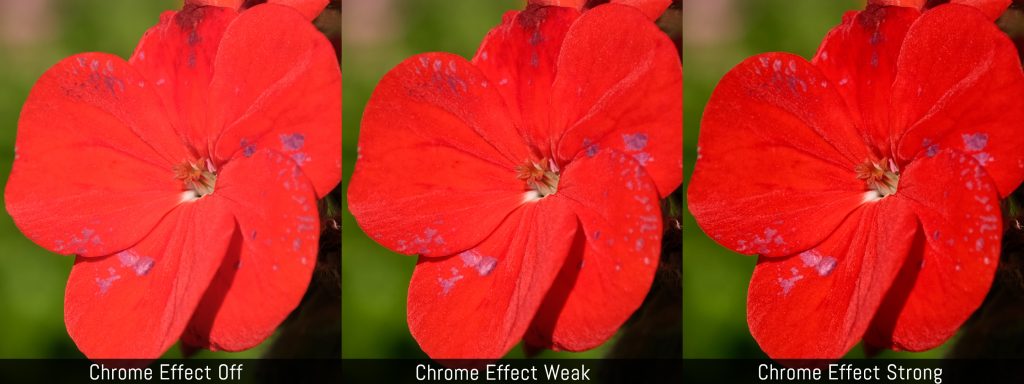After launching the X-Pro1 back in 2012, Fujifilm introduced a more affordable model the following year, the X-E1. It preserved the rangefinder concept of having the viewfinder on the left-hand side of the body, but featured an electronic version rather than the innovative hybrid viewfinder of the Pro model.
Over the years, the series has evolved with the same technology found on other popular Fujifilm models such as the X-T and -XTx series.
The X-Pro3 is the latest addition to the line-up, and the most robust camera ever constructed by the brand. The X-E3 on the other hand, has become quite affordable, which means that these two products aren’t competitors within the same niche. But if you are still curious to see how they differ, you’ve come to the right place.
Ethics statement: The information supplied in this article is based on the official specifications of the X-Pro3 and our personal experience with the X-E3. We were not asked to write anything about these cameras, nor were we provided with any sort of compensation. Within the article, there are affiliate links. If you decided to buy something after clicking the link, we will receive a small commission. To know more about our ethics, you can visit our full disclosure page. Thank you!
1. Design: titanium finish for the X-Pro3
The X-Pro3 has a magnesium alloy internal frame, titanium material on the outside, and is completely weather-sealed (splash, dust and cold resistant down to -10°C). If you want extra robustness, you can buy the Dura Silver or Dura Black versions which include a DuratectTM coating to make the body scratch-proof.

The X-E3 doesn’t offer weather-sealing, nor does it have a construction as solid as the X-Pro3. You can find it in a black or silver finish. Magnesium is used for the top and bottom plates at least, and one advantage is that the camera is smaller and lighter than the Pro model.
- X-Pro3: 140.5 x 82.8 x 46.1mm, 497g
- X-E3: 121.3 x 73.9 x 42.7mm, 337g
Concerning the physical controls, one main difference concerns the dials on top: the X-Pro3 has a twin ISO/shutter speed dial embedded in the same location, whereas the X-E3 only has one for the shutter speed.
On the rear, the button layout is almost identical. Both have an AF joystick but lack the 4-way D-Pad.
Just like its predecessor, the X-Pro3 comes with dual SD card slots and they are both compatible with the faster UHS-II standard.
The X-E3 has one slot only, which is located at the bottom in the battery compartment.
2. Viewfinder: a unique experience on the X-Pro3
The X-Pro series’ main characteristic is its hybrid viewfinder which can be switched between an optical or electronic version. The X-Pro3 is no different and comes with a new iteration.
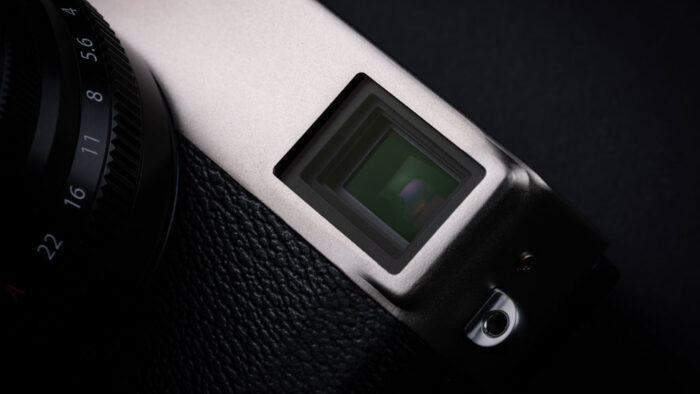
The optical viewfinder is a Reverse Galilean type and covers a field of view of 92%. It has a magnification of 0.52x and displays bright frames. This shows you the field of view of the lens used and warns you about parallax corrections in real time.
With the OVF, you can activate the ERF (Electronic rangefinder), a tiny LCD screen that appears in the bottom right corner of the optical unit. It can be useful to show a magnified version of your frame for example (where the focus area is).
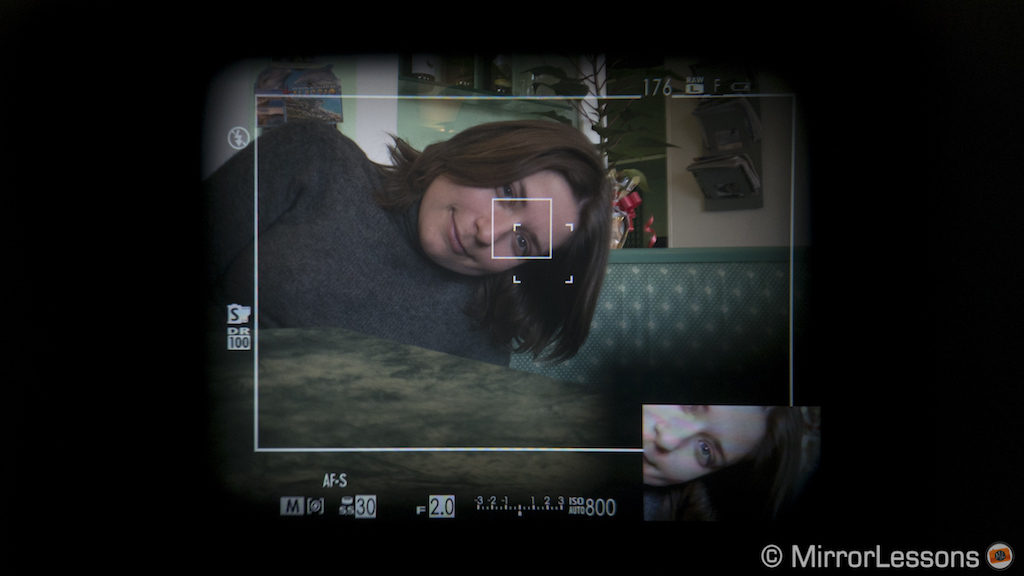
The electronic viewfinder is activated with the front lever (which also turns on the ERF). The EVF is composed of a 0.50-inch OLED panel with 3.69 million dots of resolution, a maximum refresh rate of 100fps and a magnification of 0.66x.
The X-E3 is less sophisticated and features an electronic viewfinder only. It is smaller (0.39-in), has a lower magnification (0.62x) and refresh rate of approximately 54fps. It is located on the left side of the camera just like the X-Pro3, so they both share a rangefinder design in this regard.
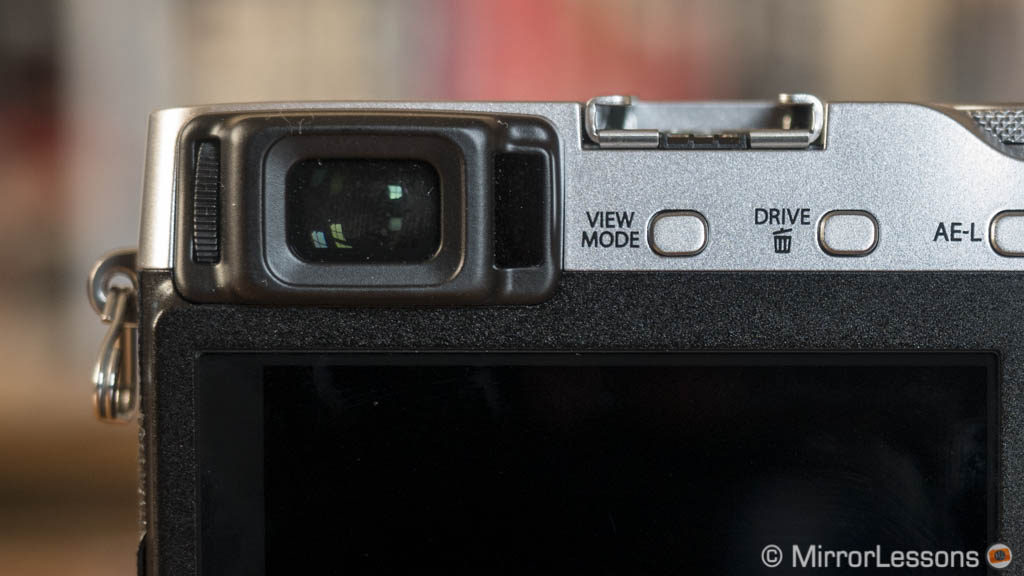
3. Rear monitor: better fixed or hidden?
The X-Pro and X-series have always been characterised by a fixed screen on the rear, a choice that some have criticised since you aren’t able to shoot from the hip with the screen angled at 90˚ or from other specific positions. The X-E3 is no different and has a 3-inch fixed LCD with 1.04M dots.
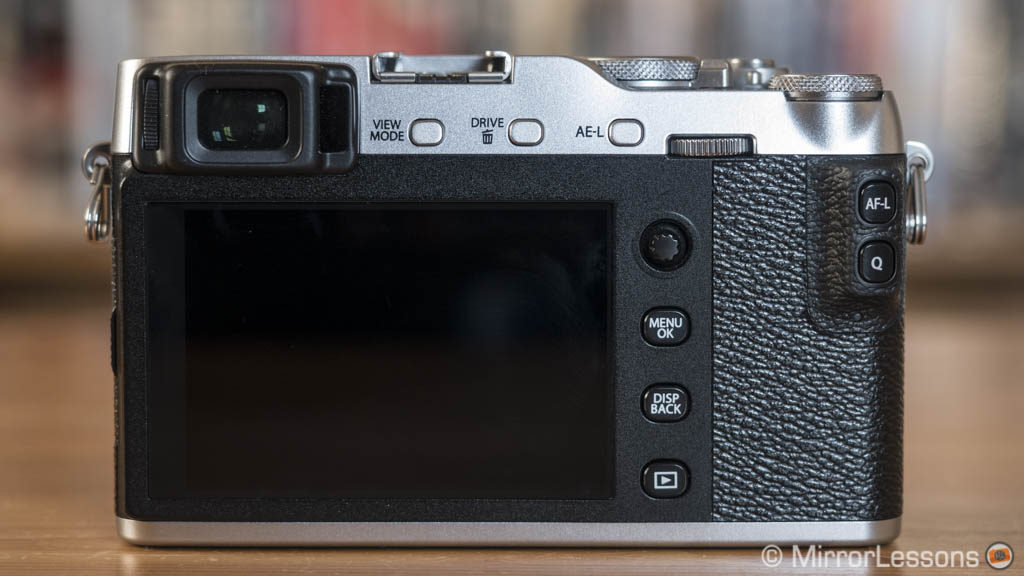
With the X-Pro3, Fujifilm has opted for a different solution, which is quite unique in the modern mirrorless camera market.
There is a screen, but it is hidden. You need to open it from the top and angle it down (maximum is 180˚). This gives you the possibility of shooting from the hip, as well as composing your shot with more ease than the X-E3, but this solution can have some limitations if you work with a tripod (it may not tilt all the way down), and there is no way of rotating it towards the front.
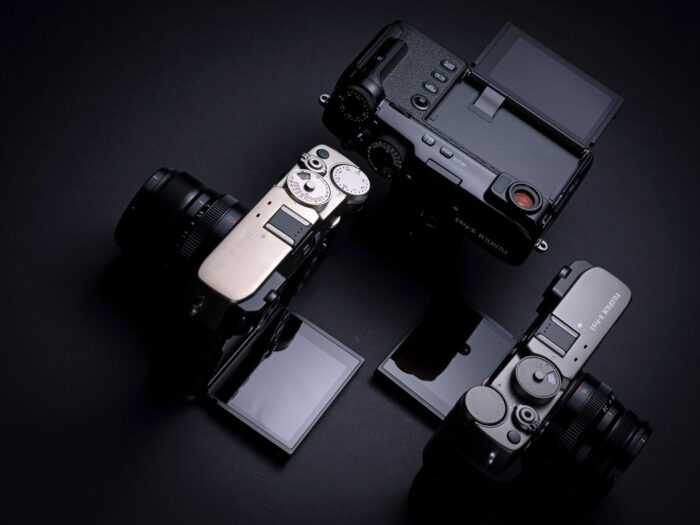
The X-Pro3 screen has more resolution (1.62M dots) but shares the same touch capabilities as the one found on the X-E3. You can move the focus point, tap to capture a shot, or flick in four different directions to select or change some functions (they can be customised in the menu). The touch screen can also be used to move the focus point while using the EVF if you don’t fancy the joystick.
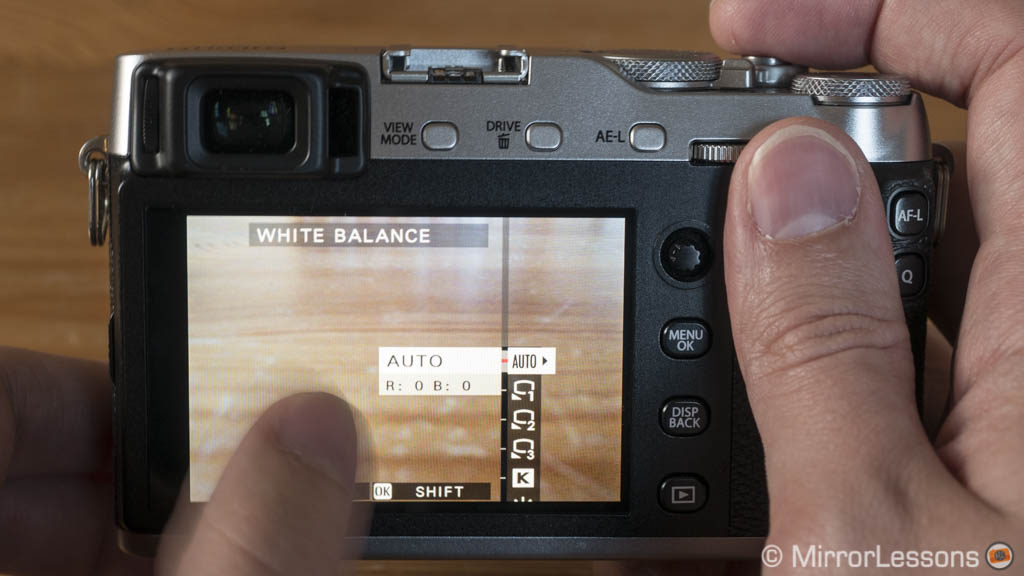
Now you may wonder what exists on the back of the X-Pro3 when the main LCD screen is closed. Well, there is another screen. It is smaller, has a square shape and displays the various settings in use as well as the remaining capacity of the memory card and battery. It is no different from the top LCD monitor seen on many DSLRs and high-end mirrorless cameras. Fujifilm has added a unique touch to it though: if you select the Classic view mode, the screen shows a graphic interface that pays tribute to the colourful design of 35mm film packaging.

4. Sensor: third vs fourth generation
The X-Pro3 features the latest APS-C X-Trans sensor (BSI design) and image engine (X-Processor 4). It has 26.1MP and a sensitivity range that goes from 160 to 12800 ISO (80 to 51200 with the extended values). These are the same specifications you can find on the X-T3 and X-T30.
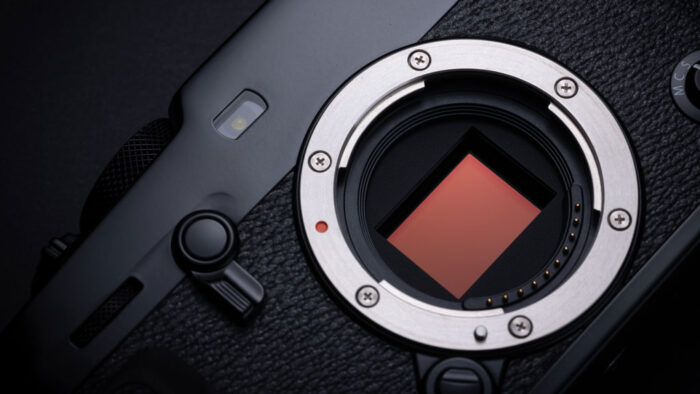
The X-E3 uses the older 24.3MP chip and previous X-Processor Pro engine (I know, the names are confusing to say the least). The ISO range goes from 200 to 12800, or 100 to 51200 with the extended range. It shares this image technology with the X-T2, X-Pro2, X-T20 and X-H1.
We had the chance to compare these two sensor generations in our X-T2 vs X-T3 full comparison. The advantage of the 26.1MP chip is not huge. If you do heavy post production, it can give you a bit less noise in the dark areas, but at high ISOs it shows a bit more noise (past 12800 especially).
5. JPG quality: new settings on the X-Pro3
The X-Pro3 features a more advanced software implementation, which means that there are several image quality settings you won’t find on the X-E3.
First, there are additional two Film Simulation modes (colour profiles): Eterna, which is designed for video recording, and Classic Neg which is brand new to the X-series at the time of publishing this article.
Both cameras have different parameters to tweak the in-camera JPG result, but the X-Pro3 also offers:
- Black and White adjustments: you can add a colour tint to monochrome images
- Clarity: increase mid-tones contrast
- Tone Curve: adjust the tonal range and contrast of your image
- Grain Effect: available on the X-E3 too, but the X-Pro3 has more settings to adjust the result
- Colour Chrome and Colour Chrome Blue effects: deepens colours and tonal gradations.
But that is not all. The new model has an array of extra features too such as:
- Multiple Exposure: up to 9 frames with four merging modes (on the X-E3 you’re limited to two images)
- HDR: it takes multiple frames with different exposures to create a final JPG with more dynamic range while maintaining a natural looking result
- Focus Bracketing: take a series of images by varying the focus point between each frame. You can then stack them in post to create more depth of field (useful for landscape or macro work)
- AF Range Limiter: choose a minimum and maximum focus distance in which the lens attached can operate.
6. Autofocus
With the latest sensor and image processor comes the latest autofocus system. The X-Pro3 features a hybrid AF with a maximum of 425 phase detection points that are distributed over 99% of the sensor surface. It has a minimum low light sensitive of -6Ev (1.4 aperture).
The X-E3 has a maximum of 325 areas but only the central portion of the sensor has phase difference points. The minimum sensitivity is much less than the X-Pro3 with a -1Ev rating.
The Pro model comes with improved face and eye detection. The camera is more precise and reactive, can detect subjects that are more distant in comparison to the X-E3, and allows you to give priority to a face when multiple people are in the frame.

7. Shooting speed
The more powerful processor of the X-Pro3 allows the camera to reach impressive continuous shooting speeds.
With the mechanical shutter, it can go up to 11fps, whereas the X-E3 tops out at 8fps. With the electronic shutter, the Pro model goes up to 20fps, or 30fps with a 1.25x crop. These speeds are performed with live view and no blackouts (similar to the Sony A9, but also the X-T3 and X-T30). The X-E3 can go up to 14fps with the e-shutter, but there is no live view.
Both cameras can go up to 1/32000s when using the electronic shutter, whereas with the mechanical curtains, the X-Pro3 goes up to 1/8000s, which is one stop faster than the X-E3 (1/4000s).
8. Video
Both cameras can record 4K video up to 30fps using the entire width of the sensor, but the X-Pro2 has two benefits:
- it does full pixel readout (line-skipping on the X-E3)
- it can record at 200Mbps (100Mbps on the X-E3)
The Pro camera can also record in DCI 4K and 2K. In 1080p, it can record up to 120fps with the High Speed mode, whereas the X-E3 stops at 60fps and can’t produce slow motion footage in camera.
The X-Pro3 has other interesting settings such as the Eterna profile, the F-Log profile and the DR settings.
The X-E3 can record 4K for approximately 10 minutes, and 1080p up to 30 minutes. The X-Pro3 extends the duration to 15min in 4K and 60min in Full HD.
To connect a microphone, you can use the 2.5mm input but you’ll most likely need an adapter. There is no headphone output on the X-E3, whereas on the X-Pro3 you can use an analog 3.5mm adapter on the USB Type C port.
Finally, there is no 10-bit option, and the X-Pro3 doesn’t even have a HDMI port, unlike the X-E3 that can output 8-bit 4:2:2 video via the Micro Type D connector.
9. Battery life
The X-Pro3 and X-E3 use the same battery (NP-W126S) and can be charged via USB.
The X-Pro3 model has a better rating (CIPA) when using the OVF at 440 shots. When using the EVF, it goes down to 370 frames, which is still a bit better than 350 on the X-E3. Of course these are official figures and usually you can get more than that.

10. Price
The X-Pro3 is a flagship model and is therefore more expensive than the mid-level X-E3. It is launched with the official price of $1800, £1700 and €1950 (body only). The Dura Silver or Dura Black versions come at an extra cost.
The X-E3, being an older model, has come down in price and can be found on offer for around $600, £630 or €600. There is definitely a big gap in price between the two cameras.
As always, remember that the prices listed above are those available at the time of publishing the article. They can change over time.
Conclusion
It is hard to ignore the price difference when talking about these two models, and that isn’t the only thing that sets them apart. The X-Pro3 has a flagship status justified by its “titanesque” build which includes full weather sealing. The X-E3 is a more compact and lightweight alternative.
Then of course there is the hybrid viewfinder, a unique feature of the X-Pro line-up (and X100 series), a controversial tilting hidden LCD screen and all the latest technology available from Fujifilm including the improved AF system. If you’re wondering about image quality though, rest assured that the difference between the two sensors is minimal.
Reminder: the links below are affiliate links. If you decided to buy something after clicking the link, we will receive a small commission.
Check the price of the Fujifilm X-E3 on
Amazon | Amazon UK | B&H Photo
Check price of Fujifilm X-Pro3 on
B&H Photo

